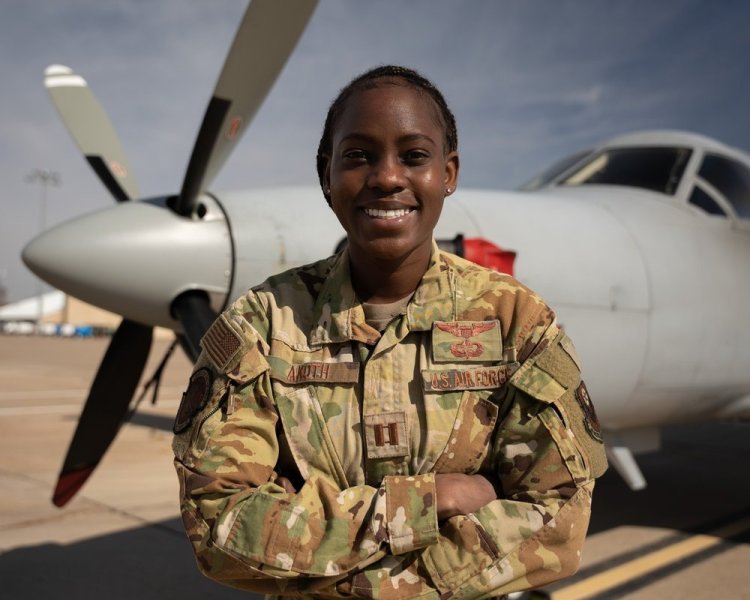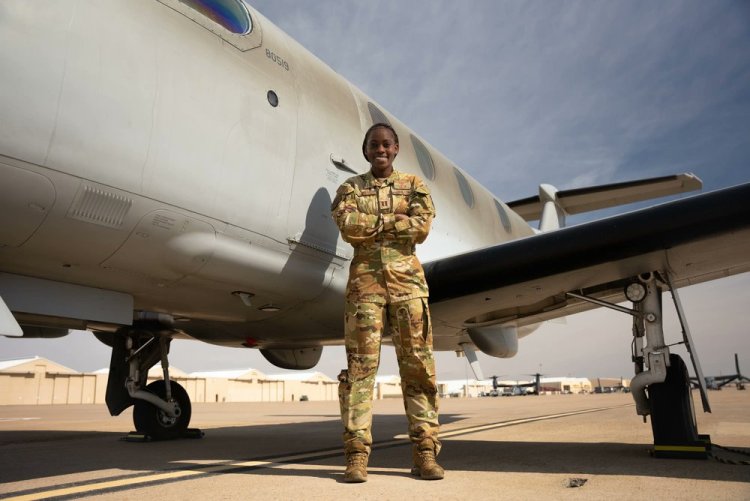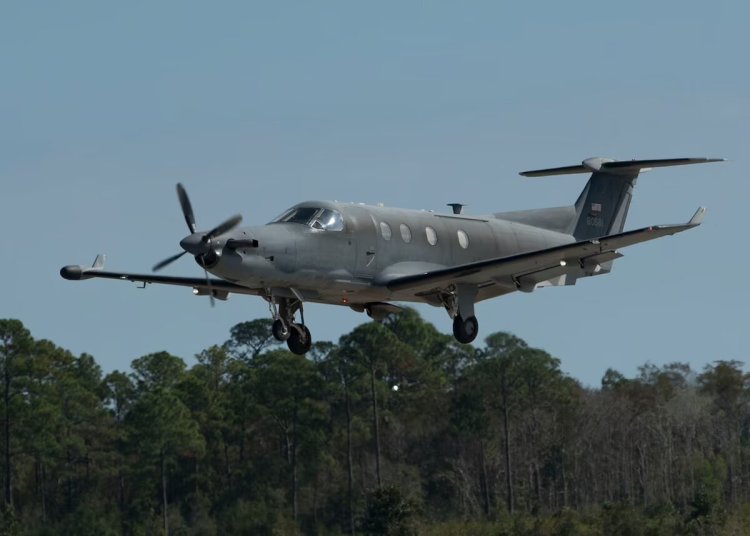Story Of Kenya's First Female US Air Force Pilot Who Rose From Kisumu
In 2017, the Columbia Air Force Academy announced that she was among the students that had been trained as airforce pilots.

It has often been said that pilots in Kenya are among the most desirable across the world. In simple terms, when you fly for airlines like Kenya Airways to various destinations around the globe, you're almost a hot cake for competing global airlines, and in this case, military air forces.
Captain Fiona Akoth, like most of us at one point, had fancied flying a plane and having that unbreakable desire in aviation. Little did she know that her passion would land her in the United States Air Force (USAF), which boasts some of the most powerful and lethal aircraft in the world.
In 2017, the Columbia Air Force Academy announced that she was among the students that had been trained as airforce pilots.
“I was well engrained in the roots back in Kenya. I had to leave a familiar country with a familiar group of friends when I was just becoming a teenager looking for a solid foundation, and that was challenging,” she was quoted by the military website as saying.

File image of Lieutenant Fiona Akoth of the United States Air Force. /TWITTER.NGWATA
Fiona was born and raised in Kisumu City and moved to the US with her family at the age of 13. It was during her middle and high school studies at Texas that she learnt of the USAF Academy, whose prerequisites to join include one having good grades for consideration, a considerably tall order for many.
“You don't know what you don't know. Our parents, my mom was just trying to do her best. Not only are you facing the normal struggles that people from here (America) face, but you're also facing the fact that you're in a completely different environment with people you don't know.
"You only know a certain amount of people and they only have access to a certain amount of information. You're just less exposed," she said in a recent interview with Defense Visual Information Distribution Service (DVIDS).
Akoth however managed to enrol at the academy where she majored in aeronautical engineering and Arabic. Besides her passion for aviation, she also had the desire in learning multiple languages and her proficiency in Swahili language, owing to her origins in Kenya, got her admitted to the Language Enabled Airman Program (LEAP).
She, however, decided to sharpen her language and return to Kenya, for an intensive 6-week training where she helped in translating Kiswahili for international health workers based in Central Kenya. She also worked with international health specialists and other agencies to provide health care to those in Mount Kenya and Central Kenya.
“This was a great experience because not only did we serve as interpreters between the doctors and the local population, but we were also able to bridge the gap culturally,” she told Air University.
Akoth returned to the US where she embarked on pilot training and currently flies the sophisticated U-28 A aircraft.
“My favourite part is that my office is the cockpit of the aeroplane. Every day people wake up and they are going to work at a desk, like an office or something but I wake up and get to fly a plane almost every day which is really nice,” she explains.
Despite the packed working schedule that could see her at work for long hours, she describes her job as a special one full of fun and more interesting than what other pilots experience.
“I think pilots in the Airforce have the most fun out of all pilots in the world. You get to fly really cool machines and we get to do really cool approaches,” she added.
Initially, Akoth was at a junior rank of first lieutenant but has since risen through the ranks to captain. She has been posted to Afghanistan, Iraq and Africa due to her language skills in Arabic, Swahili and English.
Features of U-28A Draco Aircraft
The U-28A Draco aircraft is a modified, single-engine Pilatus PC-12 aircraft and is part of the Air Force Special Operations Command manned, airborne intelligence, surveillance, and reconnaissance fleet. Operational squadrons include the 319th, 34th and 318th Special Operations Squadrons, and the 5th and 19th SOS conduct the airframe’s formal training.
It provides manned fixed-wing tactical airborne Intelligence, Surveillance and Reconnaissance (ISR) support to humanitarian operations, search and rescue and conventional and special operation missions.
The Air Force Special Operations Command (AFSOC) fielded the U-28A fleet through the purchase of commercially available aircraft and subsequent military modification to include tactical communications capabilities, aircraft survivability equipment, electro-optical sensors, and advanced navigation systems. The advanced radio-communications suite is capable of establishing U.S. Department of Defense and NATO data links, delivering full-motion video, and transmitting secure voice communications.

A U-28A Draco aircraft in flight. /US AIR FORCE
The U-28A benefits from outstanding reliability and performance, and the aircraft is capable of operating from short runways and semi-prepared surfaces. The diverse AFSOC mission requirements generated a need for small numbers of mission-specific aircraft which were procured rapidly to address specific mission needs.
The U-28A is a modified, single-engine Pilatus PC-12 that operates worldwide and is part of AFSOC’s light tactical fixed-wing fleet, formerly known as non-standard aviation.
The initial block of U-28 aircraft was procured and modified for use in operations Enduring Freedom and Iraqi Freedom.

 admin
admin 




